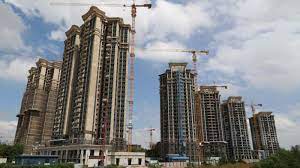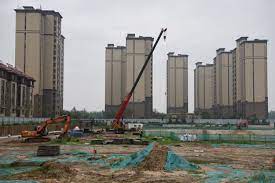China’s property crisis is sending shockwaves globally as Chinese investors and creditors scramble to offload real estate assets in a bid to raise cash amidst a worsening domestic property market. This trend, while reflecting the urgency to liquidate assets, also serves to provide concrete figures on the severity of the industry’s downturn.

The worldwide fallout triggered by increasing borrowing costs has already slashed over $1 trillion from office property values, according to Barry Sternlicht, Chairman of Starwood Capital Group. However, the true extent of the damage remains obscured as only a handful of assets have been sold, leaving analysts with scant recent data for valuation.
A palpable nervousness pervades both regulators and the market, fearing that the dearth of transactions could mask significant unrealized losses, posing risks for banks heavily invested in real estate and asset owners alike. Institutions like New York Community Bancorp and the European Central Bank are already feeling the strain, with concerns over undervalued loans and asset valuations looming large.
The pressure to raise funds has led Chinese investors to expedite the sale of overseas assets acquired during a decade-long expansion. Even prominent players in the real estate sector are not immune, with entities like China Aoyuan Group Ltd. resorting to significant discounts to offload properties, exemplified by a 45% markdown on a Toronto plot last year.
This trend of distress sales is gaining momentum, with notable transactions emerging in Europe and beyond. London’s property market, for instance, has witnessed a flurry of activity, including the sale of distressed developer Guangzhou R&F Properties Co.’s stake in a £1.34 billion project and a significant drop in prices for seized assets.
Similar patterns are observed in Australia, where Chinese developers, once dominant players, are now divesting projects. Country Garden’s Risland unit, for instance, recently sold a Melbourne site for A$250 million and offloaded a Sydney development asset, marking a strategic shift towards portfolio optimization.
While China is not the sole driver of distress in the global commercial real estate market, its heightened motivation to sell quickly adds urgency to the situation. The implications of these sales remain to be seen, with valuers tasked with gauging the true impact on market dynamics. Regardless, these developments underscore the far-reaching repercussions of China’s property crisis on the global stage.









